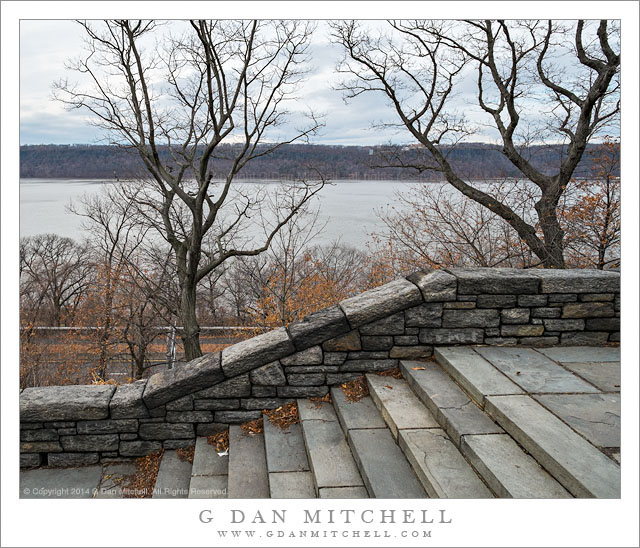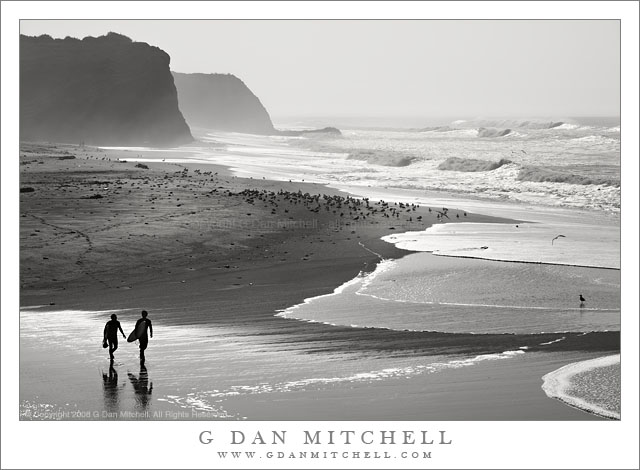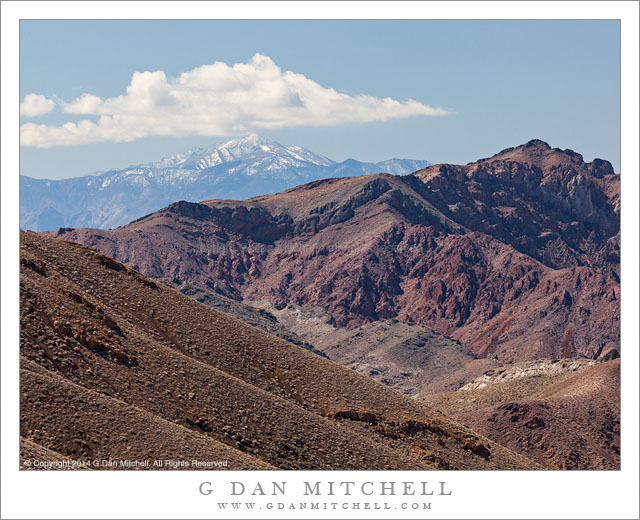
Steps, Hudson River, Winter. New York City. December 30, 2013. © Copyright 2013 G Dan Mitchell – all rights reserved.
Steps, dormant trees, and the Hudson River, Winter
We recently returned from a visit to New York City that lasted a bit longer than a week. New Yorkers shake their heads when I admit that we chose to visit New York in August — they know (and so do I) that this can be a time of miserable heat and humidity. But we got lucky and had mostly quite decent weather and even a few mornings that felt cool. On one of these days we took a train ride up the Hudson River to see this area that everyone tells me is so beautiful. And it is. Unlike California with its (beautiful, once you get to know it) golden-brown summer vegetation, here everything it green and the light is soft.
But that’s not when I made this photograph. I made this one at yet another time when New Yorkers might think only fools would choose to be there — the cold, mid-winter period between Christmas and New Year’s Day. Again, we were lucky. It was cold, but we managed to just miss some quite serious snow, and our ability to be out and about was unimpaired. On this day we decided to head a bit north on the subway and visit the Cloisters Museum, a surprising and impressive place that focuses on art and architecture from the Medieval period. Between the subway and the museum we walked up these steps, and it seemed to me that the bare branches, the gray and cloudy sky, the few remaining autumn leaves, and the stone steps captured the feeling of this winter day.
 G Dan Mitchell is a California photographer and visual opportunist whose subjects include the Pacific coast, redwood forests, central California oak/grasslands, the Sierra Nevada, California deserts, urban landscapes, night photography, and more.
G Dan Mitchell is a California photographer and visual opportunist whose subjects include the Pacific coast, redwood forests, central California oak/grasslands, the Sierra Nevada, California deserts, urban landscapes, night photography, and more.
Blog | About | Flickr | Twitter | Facebook | Google+ | 500px.com | LinkedIn | Email
Text, photographs, and other media are © Copyright G Dan Mitchell (or others when indicated) and are not in the public domain and may not be used on websites, blogs, or in other media without advance permission from G Dan Mitchell.



